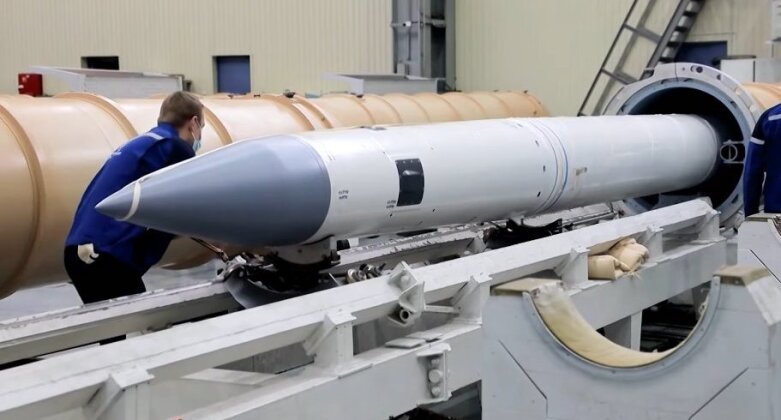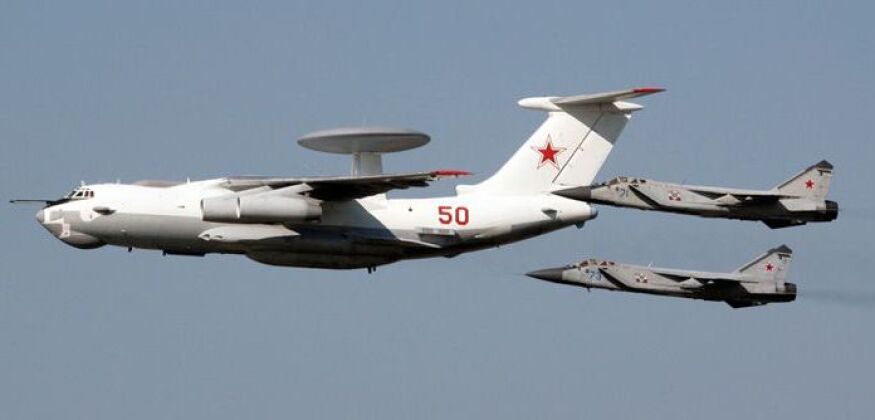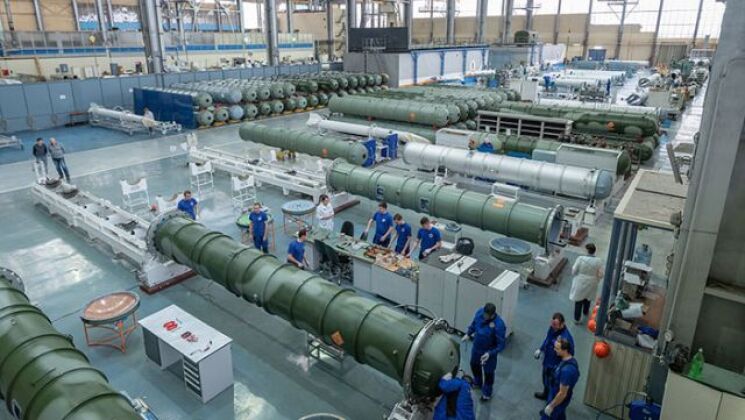News
Russia Finally Combat Tests S-400’s Unique 400km Range Air Defence Missile: How Pairing with A-50 ‘Flying Radar’ Jets Maximises Precision
On November 7 it was reported that the Russian Armed Forces had used an S-400 long range air defence system in the Ukrainian theatre to fire missiles with terminal active radar homing, and paired it with A-50 airborne early warning and control (AEW&C) system to increase situational awareness against targets. The description of the missile used precisely matched the capabilities of the 40N6, which is a unique missile class used by S-400s to facilitate targeting at ranges of up to 400km. The missile’s unique trajectory, ascending to extreme near space altitudes before descending towards its target, provides it with unparalleled over the horizon strike capabilities and allows it to neutralise targets near the limits of its range as low as 5 meters off the ground. This allows S-400 units to target low attitude aircraft and cruise missiles at long distances in a way no non-Russian air defence system can due to the limitations of the Earth’s curvature on surface to air munitions following conventional trajectories. Although fielded from the October 2018, and delivered to the Chinese People’s Liberation Army from 2019, the 40N6 was not known to have been combat tested before its use in Ukraine in early November.

For the final part of its trajectory the 40N6’s distance from radars on the S-400 system itself, and the advantages of radars from elevated airborne positions providing targeting data on low altitude targets, has made pairing with aircraft valuable to ensuring precision. A source close to the Russian Defence Ministry informed state media outlet TASS regarding the use of the missile in combat and its pairing with an A-50: “Russia used S-400 Triumf system in tandem with the A-50 early warning and control aircraft in the special military operation in Ukraine. S-400s launched anti-aircraft missiles with active homing heads. The system’s use against enemy aircraft was successful.” The missiles were fired at maximum distances to hit targets at altitudes of about 1,000 meters, and “new warheads” were reportedly used in the engagement. Although A-50 AEW&C aircraft are fielded in relatively small numbers in the Russian fleet, and despite recent upgrades still reportedly have limited degrees of combat readiness, Russian fighters on average carry radars close to twice as large as their Western counterparts providing very high degrees of situational awareness and allowing them to similarly provide targeting data. The MiG-31 Foxhound interceptor carries by far the largest radar for a tactical combat aircraft, over six times the size of the American F-16’s AN/APG-68 radar, which was designed to provide very high situational awareness against low flying ground targets. This has also made it an optimal airborne sensor to pair with ground based long range air defence systems in particular units employing 40N6 missiles.

Russian officials including President Vladimir Putin have claimed that the country is producing surface to air missiles at a greater rate than all other countries combined, and while this remains uncertain due to the unknown scales of Chinese and North Korean production it is clear that Russia has a comfortable lead over the combined productive capacities of all NATO countries. This has allowed it to deliver S-400s to both Belarus and India, the latter at a very high rate, while simultaneously enlarging its own forces and replenishing missiles expended during operations in Ukraine. This scale of production was largely achieved due to the construction of three major new facilities including a new wing of the Obukhov Plant in St. Petersburg, the Avitek Plant in Kirov which was throughly modernised, and the NMP Plant in Nizhniy Novgorod. This lengthy process began in the 2000s and allowed the facilities to produce S-400s on a large scale in the latter half of the following decade from around 2016.

The current massive scale of production of surface to air missiles has allowed multiple new regiments worth of S-400s to be made ready for service annually – alongside production of other long ranged systems such as the S-300V4 and S-500. The S-400’s combination of high mobility and high situational awareness with a very long engagement range has allowed it to threaten enemy combat aircraft over very wide areas, while also provided a wide area defence against all kinds of tactical missile attack including missiles travelling at lower hypersonic speeds. The newer S-500 system has expanded on this capability, and while less well optimised to engaging tactical combat aircraft it provides defensive capabilities against intercontinental range ballistic missiles, satellites, space aircraft and faster classes of hypersonic weapons, while also providing a tremendous 600km engagement range eclipsing even that of the S-400’s 40N6 missile. With the number of S-400 divisions in Russia set to exceed 60 in 2027-28, 40N6 missiles have been widely integrated across existing units with production rates for the missile estimated to have surpassed 300 per year. This reflects the fact that Russian funding for acquisitions ground based air defence assets has for decades exceeded funding for tactical combat aviation acquisitions several times over.












